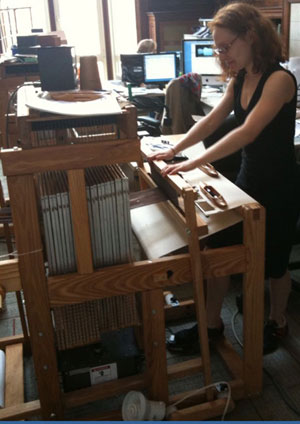Textile Designer
Tasks & duties

Textile designers may do some or all of the following:
-
work with clients to develop lines of textiles and design briefs (which outline the goals of a design project)
-
advise clients on colours and yarns
-
draw designs using paper and computer-aided design (CAD) software
-
select the colours and designs for making the fabric
-
paint designs for printing
-
produce a sample of the fabric on a sample machine
-
instruct the machine technicians to set up machines in a particular way
-
instruct the finishers to adjust the finish to the final textile product
-
record technical information, such as type and density of yarn, so that fabric costs can be calculated
-
research the textile market for future fashion trends
Specialisations
Textile designers may specialise in fabric for clothing, fabric for commercial and domestic interiors, or carpet.
Skills & knowledge

Textile designers need to have:
-
knowledge of textiles and their properties
-
knowledge of different weaving structures
-
knowledge of textile dyeing processes
-
knowledge of the latest textile styles and trends
-
understanding of traditional and modern textile manufacturing processes and machinery
-
up-to-date knowledge of technical advances in the industry
-
the ability to interpret design briefs (which outline the goals of a design project)
-
design and drawing skills
-
computer skills, including the ability to use computer-aided design (CAD) software
-
maths skills for measuring and making calculations
-
market research skills to work out the demands of the textile market
-
organisational skills and the ability to work to deadlines
-
good communication skills
-
problem-solving skills
-
business skills if they are self-employed
When working on clothing fabric, textile designers need to have knowledge of how garments are made. When designing commercial and domestic interior textiles they need to have knowledge of interior design.
Entry requirements
To become a textile designer you need to have a diploma or degree in textile design. For entry into these programmes, you need to submit a portfolio of original art or design work.
Secondary education
A tertiary entrance qualification is needed to enter further training. Useful subjects include maths, art and design or technology.
Training on the job
Textile designers are usually trained on the job in the specific manufacturing processes of a company.
Useful experience
Useful experience for textile designers includes:
-
art
-
design
-
weaving
-
sewing
-
knitting
-
painting
Related courses
Fashion Design
Textile Design
For more information, please refer to Career Services.
Document Actions
